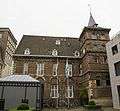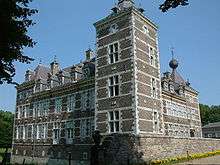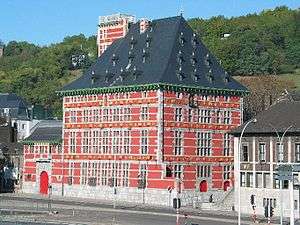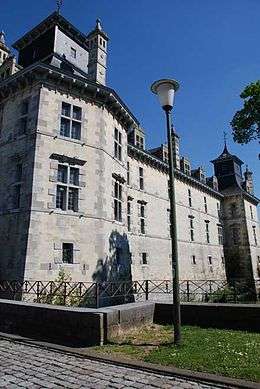Mosan Renaissance
Mosan Renaissance, also known as Maasland Renaissance, is a regional architectural style dating from the 17th and 18th centuries. The style is only remotely related to Renaissance architecture. The term should not be confused with Mosan art, which applies to Romanesque art and architecture during the Middle Ages in the Meuse river region.
The style has been applied predominantly in the Principality of Liège in present-day Belgium and the Netherlands, mainly in the city of Liège, the Land of Herve, and the regions of Belgian Limburg and Dutch South Limburg. The style is manifested in townhouses, castles, farms, manor houses, and sometimes in monasteries.
The Mosan Renaissance style developed in Liège in the 16th century during the reign of Erard de la Marck. The style is a take on earlier used methods of timber framing into which a new material (stone) has been incorporated. Stone-framed windows, decorated architraves and alternating layers of brick and stone are characteristic of the style. Most utilised materials were endemic to the regions where the style prevailed, namely blue limestone (also known as Namur stone), brick and mergel (a type of chalk).
Gallery
 Abbaye de la Paix-Dieu, Amay
Abbaye de la Paix-Dieu, Amay De Bonte Os, Maaseik
De Bonte Os, Maaseik Groene Schildt, Maaseik
Groene Schildt, Maaseik Het Gulden Hert, Maaseik
Het Gulden Hert, Maaseik Town hall Bilzen
Town hall Bilzen Poort van Beusdael, Maastricht
Poort van Beusdael, Maastricht House Ridderstraat, Maastricht
House Ridderstraat, Maastricht Jesuit college, Maastricht
Jesuit college, Maastricht Castle Eijsden
Castle Eijsden Visé, town hall
Visé, town hall
 Clermont-sur-Berwinne
Clermont-sur-Berwinne- Castle of Jehay-Bodegnée

| Wikimedia Commons has media related to Mosan Renaissance. |